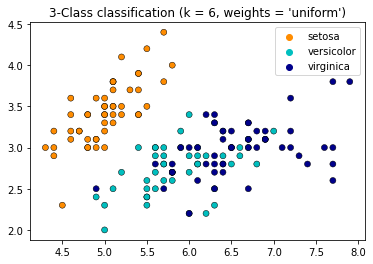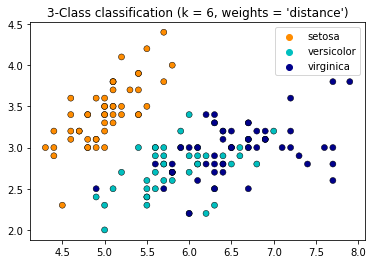n_neighbors = 6
# import some data to play with
iris = datasets.load_iris()
# we only take the first two features. We could avoid this ugly
# slicing by using a two-dim dataset
X = iris.data[:, :4]
y = iris.target
#split dataset into train and test data
X_train, X_test, y_train, y_test = train_test_split(X, y, test_size=0.2, random_state=1, stratify=y)
# Create color maps
cmap_light = ListedColormap(["orange", "cyan", "cornflowerblue"])
cmap_bold = ["darkorange", "c", "darkblue"]
for weights in ["uniform", "distance"]:
# we create an instance of Neighbours Classifier and fit the data.
clf = neighbors.KNeighborsClassifier(n_neighbors, weights=weights)
clf.fit(X_train,y_train)
ax = plt.subplots()
# DecisionBoundaryDisplay.from_estimator(
# clf,
# X,
# cmap=cmap_light,
# ax=ax,
# response_method="predict",
# plot_method="pcolormesh",
# xlabel=iris.feature_names[0],
# ylabel=iris.feature_names[1],
# shading="auto",
# )
# Plot also the training points
sns.scatterplot(
x=X[:, 0],
y=X[:, 1],
hue=iris.target_names[y],
palette=cmap_bold,
alpha=1.0,
edgecolor="black",
)
plt.title(
"3-Class classification (k = %i, weights = '%s')" % (n_neighbors, weights)
)
plt.show()



